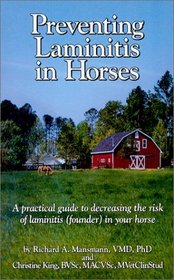Search -
Preventing Laminitis in Horses : a Practical Guide to Decreasing the Risk of Laminitis (Founder) in Your Horse
Preventing Laminitis in Horses a Practical Guide to Decreasing the Risk of Laminitis in Your Horse - Founder
Author:
Laminitis, or founder, is a potentially devastating foot condition that can affect any horse or pony. In this informative booklet, the authors begin by explaining the events that lead to laminitis-breakdown of the bond between the hoof wall and the pedal (or coffin) bone-and why this condition can have such serious and long-lasting consequences.... more »
Author:
Laminitis, or founder, is a potentially devastating foot condition that can affect any horse or pony. In this informative booklet, the authors begin by explaining the events that lead to laminitis-breakdown of the bond between the hoof wall and the pedal (or coffin) bone-and why this condition can have such serious and long-lasting consequences.... more »
ISBN-13: 9780967492612
ISBN-10: 0967492610
Publication Date: 12/22/2000
Pages: 32
Rating: ?
ISBN-10: 0967492610
Publication Date: 12/22/2000
Pages: 32
Rating: ?
0 stars, based on 0 rating
Genres:




